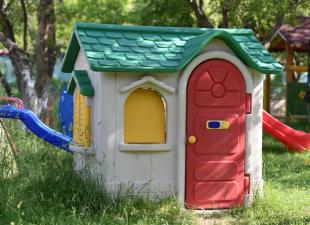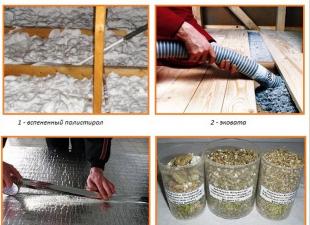Furnace mortar is made by mixing specially selected components - binder, water and aggregate. A high-quality mixture can be prepared with your own hands if you know the basic rules for the selection and connection of its components.
1
When building brick heating units, a clay mortar is usually used. In terms of its composition, it is ideally suited for securely fixing each brick of the structure being erected. But for laying the foundation of the furnace and its chimney, it is advisable to use a cement or lime mixture. They do not crack from condensation that collects in the specified elements of the heating device.
Clay mortar for brickwork
The main indicator of the clay mixture for masonry is fat content. It is on this characteristic that the strength of the masonry composition, its resistance to high temperatures, plasticity, and shrinkage depend. All clay-based solutions are usually divided into three types:
- Skinny. They are considered fragile and low plastic. In addition, the lean mixture begins to crack after drying.
- Fatty. These compositions have excellent plastic characteristics. But when dry, they are prone to destruction (crumbling).
- Normal. Ideal mixes for masonry work. At 100-degree temperature, they do not collapse, practically do not shrink, and have a good level of plasticity. A normal oven grout is easy to use. With its help, any more or less experienced home craftsman will do the masonry without any problems with his own hands.
To prepare the correct clay composition for the oven, therefore, its plasticity should be correctly selected. Too greasy or too skinny mixture will crack and crumble, which is unacceptable. This means that we need to decide on the plasticity of the clay that we plan to use. This is done as follows. Pour 10 liters of water into a bucket, add clay to the container. Stir this composition (the procedure is performed with a wooden board) until a creamy consistency is obtained (add clay as needed). It's simple now. Take out the board and examine it carefully. If a thick clay layer is stuck to the wooden surface, you have an overly plastic mixture.
This problem is solved by adding to the composition. For 10 liters of the mixture, 1 liter of this material is used. Add sand (first 1 liter), mix thoroughly. Add more sand if necessary. And so on until the prepared composition remains on the wood plank with a layer of about 2 mm. Such a solution is considered optimal for masonry. If the mixture adheres in a thinner layer, everything will have to be redone - you got a non-plastic composition. It is not suitable for laying the stove.
2
Having figured out the principle of determining the plasticity of a masonry mortar, you can start mixing it. With your own hands, this operation can be performed in different ways. A very simple technique that we, in fact, have already covered. You need to soak the clay in a small amount of water 24 hours before the planned procedure for laying the stove. Then (in a day) add the liquid to the soaked material and mix the composition with a shovel until a sour cream-like state. After that, you need to strain the resulting mixture and add sand to it (remember the proportions indicated above).

Mortar on brick
If there are no liquid puddles on the surface of the mud, you did everything right. If the clay appears in liquid form on the surface of the masonry mixture, it is necessary to add more sand to it.
In cases where impeccably clean clay is used (without foreign inclusions and small stones), the mixture for the stoves can be prepared by hand using the second method. Its essence is as follows. Add fine sifted sand to clean clay and fill the resulting composition with water (a quarter of the total volume of the mixture). Stir the composition thoroughly until creamy. At the exit, it should slide off the shovel without difficulty, but in no case should it spread. The next step is to add cement and salt to the resulting composition. These components will increase the strength characteristics of the clay kiln mortar. Cement for 10 liters of the mixture is taken 750 mg, salt - about 200 g.
The third method involves the use of refractory clay and chamotte sand. These components should be mixed with each other in the same ratio. Then add water to the mixture. Its amount is 25% of the clay volume. Mix the composition. That's all. This is perhaps the most elementary way to prepare mortar for laying ovens. There is another method of making the mixture of interest to us with our own hands. It is made from loam. You will have to mix 10 small portions of different solutions. The first mixture has proportions - part of cement + part of sand + 10 parts of loam, the second - 2 hours of sand + 1 hour of cement + 9 hours of clay, and so on. The latter composition, therefore, will contain 1 hour of cement, 10 hours of sand and 1 hour of loam.
All mixed solutions should be placed in small boxes and left to dry completely in the fresh air (6-7 days). After a week, start examining the resulting mixtures. For masonry, choose the composition in which there is the maximum amount of clay and at the same time the phenomenon of cracking is completely absent. Believe me, it will be ideal - it will be able to withstand furnace heating temperatures up to 500-600 ° C without deformation and crumbling. Choose your own version of the preparation of clay mortar!
3
For the bases and chimneys of furnaces, as noted, other solutions must be used - quickly solidifying and high strength. Such mixtures can be prepared from cement and sand or lime-based. Cement mixtures are prepared as follows:
- Sift well-dried sand. It should be crumbly and as clean as possible.
- Mix sand and cement (3-4 to 1).
- Mix the ingredients actively. There should be no lumps of cement in the finished composition.

Bricklaying for mortar
Add water to the mixture just before starting the masonry work. The volume of liquid is taken in such a way that the solution is sufficiently mobile, but at the same time it does not slide off the shovel. An important point! The cement masonry composition must be applied within 60 minutes after preparation. In an hour, she will simply grab (and tightly), and it will be impossible to use it.
The lime mixture is made on the basis of the so-called dough. It is made from one part of lime (take quicklime) and 3 parts of water. Mixing these components is dangerous. There is a risk of damage to the respiratory tract of a person and his skin. Therefore, the operation must be carried out in protective clothing and a respirator. It is even easier to purchase a ready-made lime mortar at a hardware store. It is relatively inexpensive. The operation of mixing the components of the lime composition for the masonry of the furnace is as follows:
- Rub the lime dough through a sieve.
- Sift the sand thoroughly.
- Add part of the dough to three parts of sand, stir, add water, stir the solution again. Add more liquids as needed. As a result, you should get a plastic composition.
Some experts advise using a cement-lime masonry mixture. It is prepared from 10 hours of sand, 2 hours of dough and 1 hour of cement. Here you should adhere to a certain order of actions. You must first mix the cement and sand. Then add water to the lime dough (the solution should be viscous). And only after that you mix the dough with water and a composition of cement with sand. It is allowed to slightly dilute the mixture with a small amount of liquid.
We are confident that our advice will help you prepare a quality masonry mortar. Take this operation really responsibly. It is on the quality of the masonry mixture that the efficiency of the furnace operation depends. May it always be warm in your home!
 parlini.ru Repair of an apartment, a summer residence and a house.
parlini.ru Repair of an apartment, a summer residence and a house.


